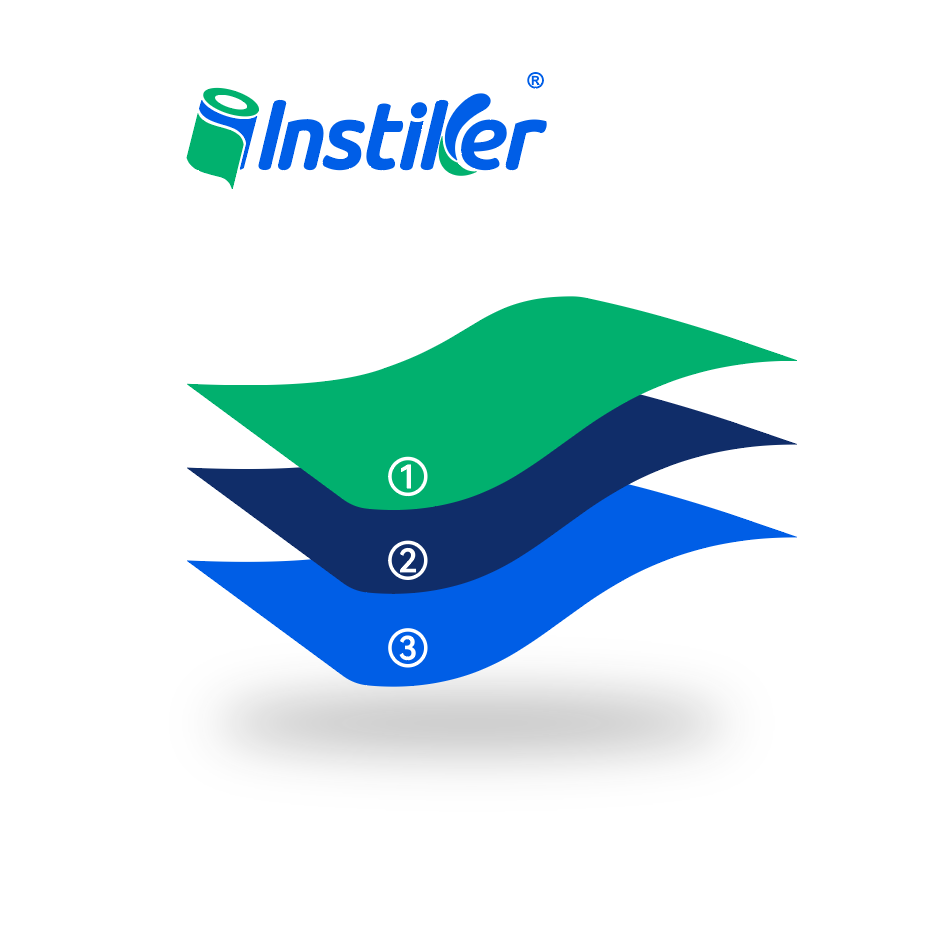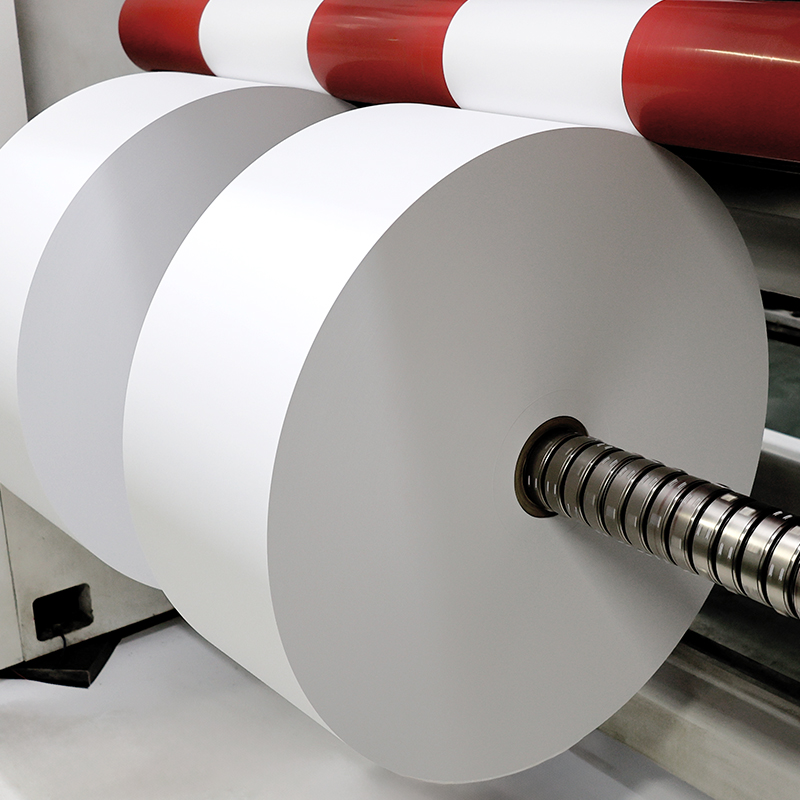Email:
Tel:
+86-18023461748
378 Maxin Road , Zhongluotan Town ,
Baiyun District , Guangzhou City China













YH20325
Instiker
| Color: | |
|---|---|
| Size: | |
| Material: | |
| Application: | |
| Availability: | |
| Quantity: | |

Product Name: 50μm Yellow PET Solvent 60g White Glassine
1. Face Stock: Yellow PET
Caliper (μm): 58±5% GB/T 451.3-2003
Weight (g/㎡): 79±5% GB/T 451.2-2002
2. Adhesive Performance: Solvent
Initial Adhesion (N): 8.06 FTM 9
20 min.180'Peel Adhesion (N/25mm) : 15.67 FTM 1
20 min.90'Peel Adhesion (N/25mm): 10.25 FTM 2
Storage Temperature: -15°C to 80°C
Minimum Lakelling Temperature: 10°C
3. Liner: White Glassine
Caliper (μm): 65±5% GB/T 451.3-2003
Weight (g/㎡): 80±5% GB/T 451.3-2003
It can be stored for 1 year at the temperature of 23+2°C and relative humidity of 50+5%
It is widely used in bar code printing and normal printing, die-cutting performance is excel-White Glassine lent. Excellent performance on many packaging materials.
It is widely used in various printing processes. Attention should be paid to controlling the viscosity of the ink to avoid the loss of the coating caused by over-viscous ink. Avoid exces-sive rewinding tension, which may cause label glue overflow. Simple text printing and bar code printing are recommended.
It is with a special coating on the surface. It has a metallic texture and has excellent tear resistance, high temperature resistance, opacity and chemical corrosion resistance. Suitable for making various resistant labels and widely used in electronic products.
Q: Is this label fully recyclable?
A: Yes, the synthetic face stock and recycled kraft liner are both recyclable in plastic and paper streams, respectively. Remove adhesive residue before recycling.
Q: Can it be composted?
A: The face stock and adhesive are certified for industrial composting (OK Compost Industrial), breaking down into organic matter within 12 weeks under controlled conditions.
Q: How does it compare to traditional paper labels in wet environments?
A: The synthetic fibers repel water, making it 300% more moisture-resistant than kraft or paper labels, ideal for refrigerated or outdoor applications.
Q: Does the eco-friendly adhesive affect bonding strength?
A: No, the plant-based adhesive matches the performance of traditional acrylic adhesives, with a peel adhesion of 10N/25mm on stainless steel, ensuring reliable substrate bonding.



Product Name: 50μm Yellow PET Solvent 60g White Glassine
1. Face Stock: Yellow PET
Caliper (μm): 58±5% GB/T 451.3-2003
Weight (g/㎡): 79±5% GB/T 451.2-2002
2. Adhesive Performance: Solvent
Initial Adhesion (N): 8.06 FTM 9
20 min.180'Peel Adhesion (N/25mm) : 15.67 FTM 1
20 min.90'Peel Adhesion (N/25mm): 10.25 FTM 2
Storage Temperature: -15°C to 80°C
Minimum Lakelling Temperature: 10°C
3. Liner: White Glassine
Caliper (μm): 65±5% GB/T 451.3-2003
Weight (g/㎡): 80±5% GB/T 451.3-2003
It can be stored for 1 year at the temperature of 23+2°C and relative humidity of 50+5%
It is widely used in bar code printing and normal printing, die-cutting performance is excel-White Glassine lent. Excellent performance on many packaging materials.
It is widely used in various printing processes. Attention should be paid to controlling the viscosity of the ink to avoid the loss of the coating caused by over-viscous ink. Avoid exces-sive rewinding tension, which may cause label glue overflow. Simple text printing and bar code printing are recommended.
It is with a special coating on the surface. It has a metallic texture and has excellent tear resistance, high temperature resistance, opacity and chemical corrosion resistance. Suitable for making various resistant labels and widely used in electronic products.
Q: Is this label fully recyclable?
A: Yes, the synthetic face stock and recycled kraft liner are both recyclable in plastic and paper streams, respectively. Remove adhesive residue before recycling.
Q: Can it be composted?
A: The face stock and adhesive are certified for industrial composting (OK Compost Industrial), breaking down into organic matter within 12 weeks under controlled conditions.
Q: How does it compare to traditional paper labels in wet environments?
A: The synthetic fibers repel water, making it 300% more moisture-resistant than kraft or paper labels, ideal for refrigerated or outdoor applications.
Q: Does the eco-friendly adhesive affect bonding strength?
A: No, the plant-based adhesive matches the performance of traditional acrylic adhesives, with a peel adhesion of 10N/25mm on stainless steel, ensuring reliable substrate bonding.


Yellow PET (polyethylene terephthalate) is a thermoplastic polyester polymer material polymerized from terephthalic acid (PTA) and ethylene glycol (EG). Its yellow appearance is usually formed by adding organic or inorganic pigments, dyes, or introducing chromogenic groups (such as nitrogen and sulfur-containing compounds) during the polymerization process. The color of yellow PET comes from colorants outside the molecular structure or trace impurities/modified components during the polymerization process. Essentially, it still belongs to the PET polymer system.
oil-based adhesive is a type of adhesive that uses oil-based solvents (such as toluene, xylene, etc.) as the dispersion medium. It is mainly made by dissolving synthetic rubber (such as chloroprene rubber, nitrile rubber, etc.) or natural rubber in organic solvents. Its essence is to cross-link and solidify rubber molecules through solvent evaporation, thereby achieving a bonding effect. It belongs to a type of traditional adhesive.
The 60g white glassine liner protects the acrylic adhesive during storage and transportation. Its smooth surface allows for easy release of the label, which is essential for efficient application in high - volume production settings.

Yellow PET (polyethylene terephthalate) is a thermoplastic polyester polymer material polymerized from terephthalic acid (PTA) and ethylene glycol (EG). Its yellow appearance is usually formed by adding organic or inorganic pigments, dyes, or introducing chromogenic groups (such as nitrogen and sulfur-containing compounds) during the polymerization process. The color of yellow PET comes from colorants outside the molecular structure or trace impurities/modified components during the polymerization process. Essentially, it still belongs to the PET polymer system.
oil-based adhesive is a type of adhesive that uses oil-based solvents (such as toluene, xylene, etc.) as the dispersion medium. It is mainly made by dissolving synthetic rubber (such as chloroprene rubber, nitrile rubber, etc.) or natural rubber in organic solvents. Its essence is to cross-link and solidify rubber molecules through solvent evaporation, thereby achieving a bonding effect. It belongs to a type of traditional adhesive.
The 60g white glassine liner protects the acrylic adhesive during storage and transportation. Its smooth surface allows for easy release of the label, which is essential for efficient application in high - volume production settings.

Due to the excellent printing performance of PET stickers, it is suitable for letterpress, screen printing, offset printing, flexographic printing to produce various exquisite labels. It also has good performance for special labels.
Due to the excellent printing performance of PET stickers, it is suitable for letterpress, screen printing, offset printing, flexographic printing to produce various exquisite labels. It also has good performance for special labels.